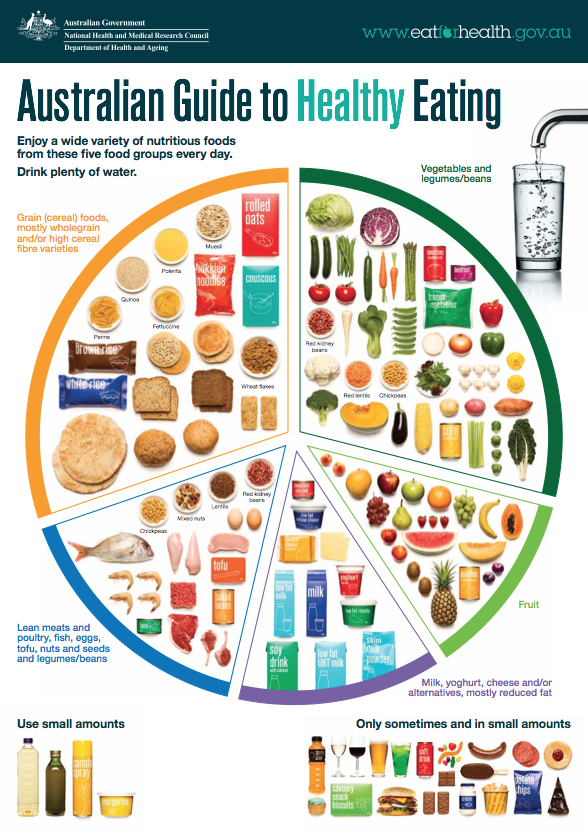Carbohydrates
When you think of the word “Carbohydrates”, the first image that might pop into your head may be a bowl of pasta, a baked potato or a plate of rice. And you’re right! However, there are other foods that contain carbohydrates that may not be as obvious. These include nutritious foods such as fruit, dairy and legumes as well as foods with less nutritional value such as biscuits, cakes and lollies.
Carbohydrates are in most of the food we eat. For example, fruits contain the carbohydrate fructose and glucose, dairy has lactose, a potato has starch, and the list goes on. Carbohydrates are broken down by the body into simple sugars. These sugars circulate in the bloodstream and are used by the body’s cells for energy. The brain also uses one of these simple sugars (glucose) as its primary energy source. This is why children need carbohydrates to stay alert and active throughout the day.
Which foods contain carbohydrate?
Many foods contain carbohydrates, however, some foods are more nutrient-rich than others. Since carbohydrates are all treated in the same way by the body, it is important to choose carbohydrate foods that also contain other nutrients. This ensures the body is not simply being provided with sugar but with other nutrients that it also requires to function.
We can use the Australian Guide to Healthy Eating plate to help us with our choices:

Grains, Bread and Cereals
When opting for carbohydrates in the form of bread, always choose higher fibre and low GI options when selecting these products as they provide more nutritional value and keep children fuller for longer.
Vegetables
Starchy vegetables such as potato, corn, parsnip, sweet potato and pumpkin all contain carbohydrates and are all nutrient-rich foods that contain many other vitamins and minerals. Plus, they’re a good source of fibre.
Legumes are an excellent source of protein, B vitamins, iron and folate. They have a low GI, keeping children fuller for longer. Examples of legumes include kidney beans, chickpeas and lentils.
Fruit
All fruits contain carbohydrates, in the form of fructose and glucose. Eating fruit provides your body with not only carbohydrates, but also the nutritional benefit of other vitamins, minerals, and dietary fibre contained in the fruit.
Dairy
Dairy products contain a carbohydrate called lactose. These products are nutrient-rich contributing high calcium and protein to the diet.
“Extra” (occasional) foods
Cakes, pastries, pies, donuts, chips, confectionery, sweets, and all sugary drinks contain carbohydrate. These are nutrient poor foods as they do not provide many nutritional benefits and are high in energy (kilojoules), fat, sugar and sodium.
Glycemic Index (GI)
The GI is a measure of the rate at which blood sugar levels rise after eating a particular food. It can only be measured in carbohydrate-containing foods. For more information about GI see our grains, bread & cereals page.
So what should children be eating?
Children need to eat a wide variety of nutritious carbohydrate-containing foods for a healthy and balanced diet. It is beneficial to eat more of the lower GI foods, legumes, fruits and vegetables, dairy. Choose whole-grain cereals and bread as these provide more fibre, vitamins, minerals, and contain more natural sugars.
Children also need to limit food and drinks containing high amounts of added sugars. Sweets, baked goods, pastries, soft drinks and many snack foods are often high in added sugar, provide excess energy and are low in beneficial nutrients. Findings from the 2007 National Children’s Nutrition and Physical Activity Survey showed that children are eating too many of these ‘extra’ foods instead of healthier carbohydrates. We recommend limiting the intake of these ‘extra’ foods by only eating them occasionally.






